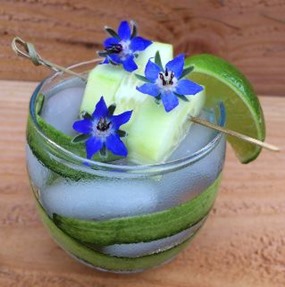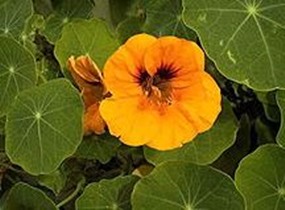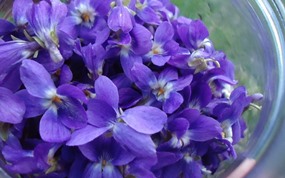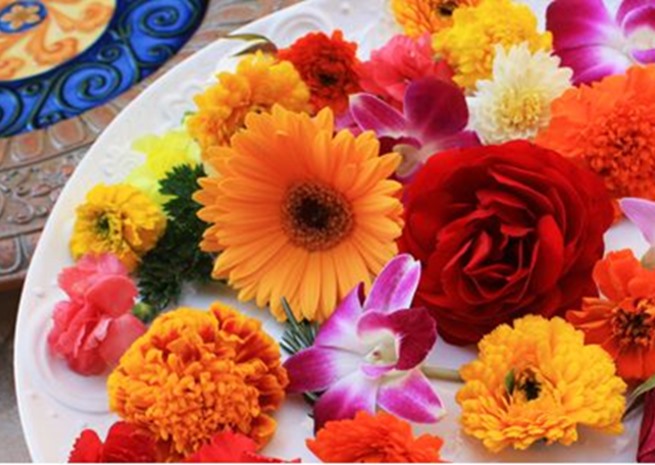 Do you feel that your food needs a little something to make it more appealing? Add to it a flower or two!
Do you feel that your food needs a little something to make it more appealing? Add to it a flower or two!
But not just any flower. Not everything that blossoms is safe for human consumption. Stick to the tried and tested.
Here are some of the flowers that you can add to your salad, main dish, desert, or a beverage:
Borage (Boragoofficnialis). The exquisite blue star-shaped flowers of borage have a refreshing cucumber-like flavour. Add them to lemonade or gin and tonic. They can also be sprinkled over salads.
Calendula or pot marigold (Calendula officinalis). This is a wonderful edible flower. Its sharp taste resembles saffron, which is why it is known as poor man’s saffron. Sprinkle calendula / marigold petals on soups, pasta, rice dishes, scrambled eggs and salads.
Carnation or dianthus (Dianthus caryophyllus). Seep the petals in wine, use them as cake decorations or add them to salads.
 Clover (Trifolium species). With their sweet, liquorice-like flavour, clover flowers make a great salad garnish. The whole above-ground plant is edible. Consume young, tender growth. Mature clover is difficult to digest and may cause bloating.
Clover (Trifolium species). With their sweet, liquorice-like flavour, clover flowers make a great salad garnish. The whole above-ground plant is edible. Consume young, tender growth. Mature clover is difficult to digest and may cause bloating.
Dandelion (Taraxacum officinalis). The sweet, honey-flavoured dandelion flowers can be sprinkled on rice dishes. Pick them when young; mature flowers are bitter. Young dandelion leaves are an excellent addition to salads.
Fuchsia (Fuchsia X hybrida). The tangy flowers of this plant make a beautiful garnish for salads or main dishes.
Impatiens (Impatiens wallerana). Garnish your salad with this pretty flower, or float it in drinks.
Johnny Jump-up (Viola tricolor). The subtle mint flavour of the lovely yellow, white and purple blooms of Johnny Jump-ups are a great addition to drinks, soups, pastas, desserts and salads.

Nasturtium (Tropaeolummajus). This is one of the most popular edible flowers. Blossoms have a sweet, spicy flavour similar to watercress and the whole flower can be used to garnish platters, salads, open-faced sandwiches and savoury appetizers. The leaves add a peppery tang. Seeds are edible too, especially in pickles.
Pansy (Viola X wittrockiana). Pansies have a slightly sweet, grassy flavour. The whole flower is edible. Use it to garnish fruit salads, green salads, desserts, soups and meat entrees.
Rose (Rosa rugosa or R. gallica officinalis). All roses are edible, but the white base of the petals should be removed because it is bitter. The flavour of rose petals, reminiscent of strawberries and green apples, is stronger in darker varieties. Sprinkle rose petals on desserts and salads, or make a rose petal jam. Petals frozen in ice cubes look great floating in drinks.
 Violet (Viola species). Just like its relations (Johnny Jump-ups, violas and pansies), violets are a great addition to salads, desserts and drinks.
Violet (Viola species). Just like its relations (Johnny Jump-ups, violas and pansies), violets are a great addition to salads, desserts and drinks.
Edible flowers improve the taste, aroma and the look of various foods. They have been a part of many cuisines all over the world for ages and are now all the rage in haute cuisine. Put yourself into an adventurous state of mind, and give them a try!
A few words of caution, however:
- If you are prone to allergies, introduce edible flowers gradually.
- Eat only the blossom you are sure are safe for consumption.
- Eat only the edible parts. Most often, we eat only petals, after removing pistils and stamens. The exceptions are violets, Johnny-Jump-Ups, pansies, clover, and some other flowers, which can be enjoyed whole.
- Use fresh, fully opened blossoms that have not been treated with pesticides or other chemicals, preferably the ones you harvested from your own garden early in the day.
- Keep your edible flowers fresh for several days by placing them in an airtight container padded with moist paper towels and refrigerate them.
- Do not eat faded or wilted flowers.
Finally, remember to use edible flowers sparingly and to keep the dish simple, because adding too many other flavours will overpower the delicate taste of the flowers.
Bon appétit!










